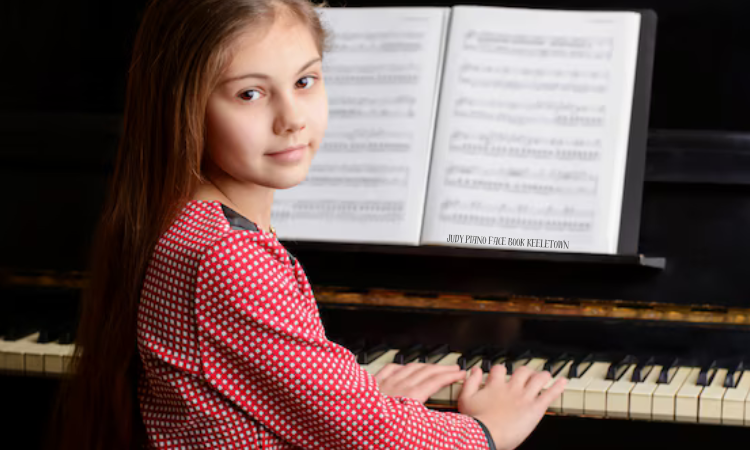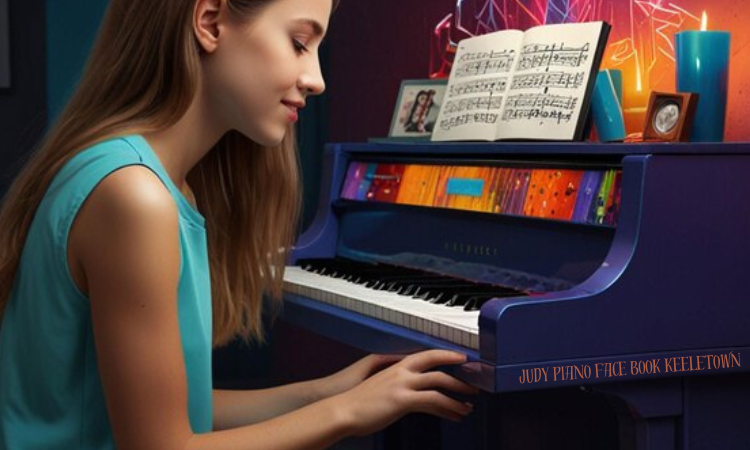History is often a tapestry woven with both melody and silence, where the forgotten notes hum beneath the surface of grander tales. The story of the “judy piano face book keeletown” and the quaint, enigmatic town of Keeletown is no exception—a tale of love, loss, art, and an unrelenting spirit that whispered through ivory keys. It is a story that stretches beyond the mechanics of wood and strings, reaching deep into the souls of those who listened and played.
Nestled amid rolling green hills and blanketed by a veil of perennial mist, Keeletown stood as a testament to simplicity. This was a place where cobbled streets kissed the earth, and the chirping of birds harmonized with the daily lives of its people. Keeletown wasn’t famous. It wasn’t remarkable, not in the way most maps mark their treasured cities. But to those who walked its narrow paths, it was a cradle of creativity and kinship, a sanctuary for dreamers.
And at its heart lay the Judy Piano.
The Arrival of Judy and Her Beloved Instrument
Judy piano face book keeletown in the 1800s wasn’t much more than a village—its population sparse but tightly knit. The wind carried tales of newcomers faster than any written letter. So, when Judith Moreland arrived, the town’s curiosity was piqued. She came from a bustling metropolis, though her demeanor was far from haughty. Judith—Judy, as the locals came to call her—brought with her a peculiar item: a grand piano of striking walnut, polished to a gleam that caught the sunlight and seemed to sing even in silence.
From the moment Judy set foot in Keeletown, she was a mystery. Where she came from, why she had chosen this sleepy village, and why she rarely spoke of her past—these were questions that hovered in the air like the perfume of wildflowers. But none of it mattered when her fingers touched the keys.

The First Song: A Village Stilled by Music
Judy’s piano wasn’t just an instrument. It was a vessel—a keeper of emotions too complex for words. The first time she played, it wasn’t in a grand hall or a concert setting. No, Judy played beneath the warm glow of an oil lamp, on a crisp evening where the stars looked like scattered diamonds in the sky. The music floated through the open window of her cottage and spilled into the town square.
A simple waltz, they said. But it was unlike anything the villagers had ever heard.
Judy’s music carried the weight of untold stories, of heartbreak and hope intertwined. It lured the townsfolk from their homes, drawn as if by an invisible thread. They gathered outside her home, breath held and hearts stilled, as the music wove a spell around them. Her piano didn’t just play notes; it spoke a language they hadn’t known they understood.
That night, Keeletown changed. Judy’s piano became more than an instrument—it became the soul of the village.
A Beacon of Healing in Troubled Times
Life in the 19th century was not without its hardships, and Keeletown had its share of struggles. Crops failed, winters bit hard, and loss was an unwelcome but frequent guest. But whenever the weight of the world pressed too heavily on their shoulders, the villagers turned to Judy and her piano.
Her melodies were not always joyful. Often, they were hauntingly melancholic, as if Judy herself bore the grief of the entire town. Yet, within the sorrow of her music, there was a peculiar comfort—a reminder that pain, too, could be beautiful and shared. The villagers found solace in her playing, and the piano became a symbol of resilience.
It was during one particularly harsh winter that the piano earned its name. The snow had fallen ceaselessly for weeks, trapping the townsfolk in their homes. Supplies dwindled, and spirits waned. But Judy, ever the determined soul, moved her piano to the church hall—the only place large enough to house everyone—and played.
For hours, she played.
And when she finally stopped, she smiled at the weary faces around her and said, “This isn’t my piano anymore. It belongs to all of you now. It’s the Judy Piano.” The name stuck, but the sentiment lingered far longer.
The Tragedy That Silenced the Keys
Every tale of beauty must, it seems, endure its share of heartbreak, and judy piano face book keeletown was no exception. In 1863, a devastating fire swept through the village. Homes were reduced to ashes, lives were uprooted, and Keeletown itself seemed on the brink of ruin. Judy’s cottage, the heart of so many evenings of music, was among the casualties.
But the Judy Piano survived.
Its walnut frame was singed, and its strings were blackened, but it endured—a battered survivor in a landscape of destruction. Judy, however, was not so fortunate. She succumbed to injuries sustained while helping others escape the flames.
The loss of Judy was a wound the town felt deeply. And though the piano was saved, it seemed to have lost its voice. Without her hands to coax it to life, it became a relic—a silent monument to a time when music stitched the town together.
The Years of Silence
For decades, the Judy Piano stood untouched in the remnants of the church hall. Its once-bright sheen dulled by dust and time, it became a shadow of its former self. Keeletown, too, seemed to dim in its absence. The bustling little community slowed, and the echoes of laughter that once filled the streets became whispers.
But even in its silence, the piano remained a symbol of hope. Locals would pass by and run their fingers over its keys, though none dared to play. It was as though the piano, without Judy, had forgotten how to sing.
The Revival of Keeletown’s Spirit
The 20th century brought change to judy piano face book keeletown. Roads were paved, electricity arrived, and the modern world began to creep in. But with progress came a resurgence of interest in the town’s history, and with it, the tale of the Judy Piano. In 1947, a young pianist named Michael Reed, a descendant of one of Keeletown’s earliest families, returned to the village after studying abroad.
Michael had heard stories of the Judy Piano from his grandmother, who spoke of the nights when Judy’s music filled the town. He sought out the piano, now worn and weathered but still standing, and decided to restore it. It was no small task. The keys were chipped, the strings rusted, and the frame cracked. But Michael believed in the soul of the instrument, just as the villagers once had.
When the restoration was complete, Michael held a concert in the very same church hall where Judy had played her final notes. The piano sang again, its voice richer and fuller, as though it had been waiting all those years to be reborn. The villagers wept as they listened, their tears a blend of joy and remembrance.

The Legacy of the Judy Piano
Today, the judy piano face book keeletown is more than just an artifact. It is a living piece of Keeletown’s history, a testament to the power of music and the resilience of the human spirit. Tourists flock to the village to hear its story and, if they’re lucky, to hear it played.
But for the people of Keeletown, it is something more profound. It is a reminder of a woman who gave them hope in their darkest hours, of a time when music bound them together, and of the belief that even in silence, there is strength.
The Judy Piano doesn’t just play music. It carries the whispers of a village, the echoes of love and loss, and the indomitable spirit of Judy herself.
And as long as its keys are touched, her story will never fade.
FAQs About the Judy Piano and Keeletown
What is the Judy Piano?
The Judy Piano is a historic grand piano in Keeletown, known for its connection to Judith Moreland, a pianist who brought hope and music to the town in the 19th century.
Who was Judith Moreland?
Judith Moreland, or Judy, was a pianist who moved to Keeletown in the 1800s. Her music became the lifeblood of the town, especially during times of hardship.
What happened to the Judy Piano during the fire?
The piano survived the devastating fire of 1863, though it was heavily damaged. Judy herself perished in the fire while saving others.
Is the Judy Piano still playable today?
Yes, the piano was restored in 1947 by Michael Reed and continues to be played during special events in Keeletown.
Can visitors see the Judy Piano?
Absolutely! The piano is displayed in Keeletown’s historic church hall, and visitors can hear its story from local guides.
Why is the Judy Piano significant?
Beyond its musical value, the Judy Piano symbolizes resilience, community, and the power of art to heal and inspire.






